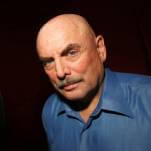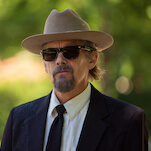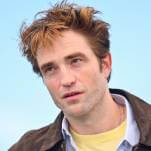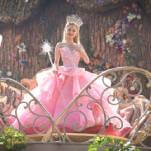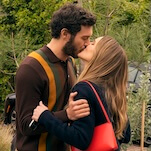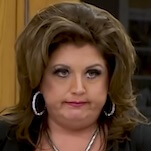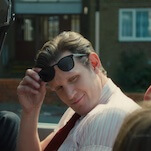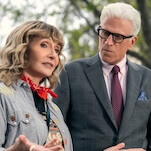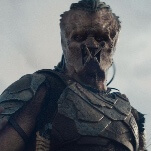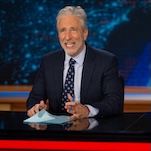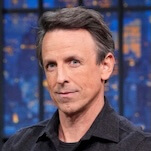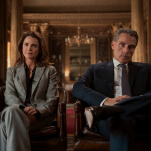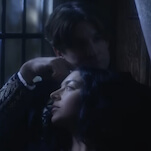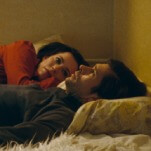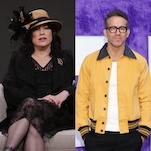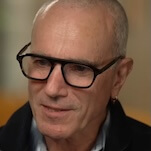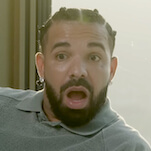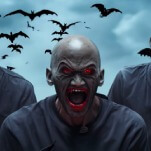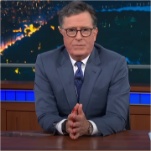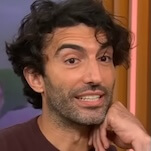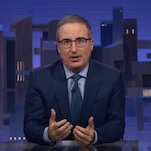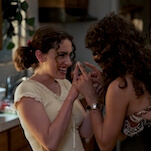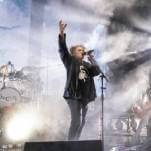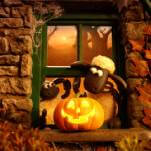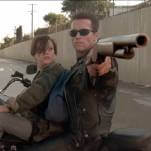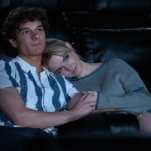It seems a little silly to memorialize a show that’s been off the air just a hair over three years, especially when most people’s memory of that show is of a shrill, vapid relic of a thankfully bygone era; the fact that The TRL Decade is running on MTV’s embarrassingly unhip uncle network, VH1—as part of its Rock Docs series—rather than the network that birthed it speaks to its status in the culture in 2012, which apparently falls somewhere between Mob Wives and Baseball Wives.
And yet for those who were part of TRL’s target demo in its millennial glory years, The TRL Decade is a sort of validation that what we were living through was more than just an acne scar on the post-pubescent back of American culture. The first and last segments of the hourlong production do an admirable job of trying to defend an argument at which many might initially scoff: That TRL represented a notable—some might even say important—moment in music history, and its decline says just as much about our current popular culture as the show did about pop culture at the turn of the millennium.
Of course, the segments sandwiched in between do a good job of reinforcing the “shrill, vapid” part of TRL’s legacy, with lots and lots of footage of teenagers being annoying (sometimes amazingly so, as with the Backstreet Boys fan who threatens to kill Carson Daly upon losing a trivia contest to an ’N Sync fan) and celebrities clowning for the camera. It’s pretty striking to witness, back-to-back, the caliber of stars that waltzed through the TRL studio—Tom Cruise, Prince, Arnold Schwarzenegger, Michael Jackson, Angelina Jolie, Jay-Z, and so on and so on and so on—but it also highlights the corporate nature of the show, especially when watching older, established stars rictus-grinning through their culturally mandated interactions with “the youth.” (Madonna’s “You’re all invited over to my house after… NOT” comment stands out as a particularly awkward attempt.)
The TRL Decade’s inherently self-congratulatory nature takes another awkward turn in its examination of, as the helpful title card puts it, “The Heavy Stuff,” specifically the show’s handling of the Columbine massacre and September 11. There’s always an odd sense of emotional disconnect watching footage of in-the-moment reactions to past tragedy, but it’s especially odd witnessing how a show that was so ill-equipped to handle tragedy did so—in this case, by inviting Joey Fatone to call in and give his thoughts on 9/11. The talking head of John Norris would like us to think that TRL was the main conduit through which millennial teens got their news, and while that may be true if your definition of “news” is A.J. from the Backstreet Boys being admitted to rehab, then sure, it definitely did that. But as Norris himself implies, him—or Chris Connelly, or Suchin Pak, or even occasionally the cardboard cutout of Kurt Loder—coming on to the TRL set with their icky real-world issues was something akin to dad crashing the party. It was awkward to watch then, and it’s even more awkward now, with the forgiving immediacy of grief removed.
But back to the special’s main argument, as stated by TRL’s affable overlord Carson Daly: “It was a time that will never happen again.” Most people have a lot of nostalgia for the musical era in which they came of age, and I likewise have a lot of residual affection for the late ’90s as represented by TRL—not so much for the music, which is a mixed bag to put it mildly, but for the unique moment it represents in pop culture: a moment where the burgeoning Internet culture propelled the music industry to new heights, right before the rise of file-sharing sent it hurtling into the ground. The growing ease of online communication meant that teenage music fans could connect and obsess together, which drove teen-friendly groups like Backstreet Boys and ’N Sync—and even slightly-less-friendly acts like Linkin Park and Kid Rock—to Diamond certification by the RIAA in a matter of weeks (sometimes days, even), a feat that’s pretty much impossible today, and in which TRL played a huge part.
TRL also, as the special puts it, “set the stage for social media to come.” While that may seem like a bit of a stretch, there is something to the idea that the late ’90s and early ’00s fostered a sense of connectivity in terms of our pop-culture consumption, and TRL represented the nexus of that movement, where music fans—generally of the teenage, pop-music-consuming variety—came together en masse to share and express their tastes and opinions to each other and the world at large with an unprecedented amount of ease and reach. It also gave rise to the expectation that fans could directly interact with and influence their favorite artists; skipping school to go down to the TRL studios in hopes of getting to meet, or even talk to a huge movie or music star was the millennial equivalent of @-replying celebrities on Twitter today.
Unfortunately, The TRL Decade only perfunctorily addresses these ideas, using them as a framing device to wallow in reminiscences of moments that range from charmingly silly to infuriatingly asinine, depending on your connection to the artists of that era. As someone who’s of an age with (and a fan of) Britney Spears, it’s amusing to watch 16-year-old Brit mumble her way through her first TRL appearance and inappropriate interactions with Method Man (“I told her she had a fat ass for a white girl”); but the time given over to the TRL-fostered relationship of Nick Lachey and Vanessa Minnillo, which happened long after I’d aged out ofTRL’s audience, seems trite and indulgent. TRL and its impact is interesting in a big-picture, music-history way, but the individual threads that compose the whole are pretty flimsy—especially when reduced, as they are in The TRL Decade, to quick-hit points of interest.
There’s much that’s glossed over in The TRL Decade that could make a whole chapter of a book about millennial music: the boy-band/nu-metal clash, hip-hop’s acquiescence to the teenybopper crowd, the way TRL artists like Eminem and Blink-182 simultaneously lampooned and profited from the show, the symbiotic relationship between TRL and the Times Square Virgin Megastore, etc. But they’re compressed to bite-size to fit alongside packages about TRL MVP Diddy—who apparently lived in the walls of the TRL studios for a period in the early aughts—and how all the rappers who came on the show wanted to bang Vanessa Minnillo. It’s a superficial, catch-all approach that’s typical of the VH1 Rock Docs franchise, and while it befits its subject, it does little to advance people’s opinions of it. Then again, perhaps that’s something that can only happen in time, once TRL is afforded the space to shed the stigma of its later years of increasing obsolescence and further retreat into the golden haze of musical nostalgia.
Stray observations
- It was interesting to relive the merging of Carson Daly’s Total Request and the separate show MTV Live into the TRL beast. It’s hard to believe that a behemoth like TRL emerged more or less organically, but there you have it.
- It’s pretty funny to watch Korn campaigning against the boy bands to get to No. 1 on TRL, considering Korn has outlasted those groups by essentially riding and co-opting pop-music trends—most recently (and horribly) Skrillex’s approximation of dubstep.
- It would have been nice of the show to address the 1998 “Wanna Be A VJ” competition for a TRL hosting gig, considering the runner-up for that contest, Dave Holmes, was all over The TRL Decade, while the winner, Jesse Camp, was relegated to a two-second blip in the intro.
- Phrase I never need to hear again after this special: “only on TRL.”
- “They couldn’t threaten to play my videos anymore, because they don’t play videos anymore.” Kid Rock, lookin’ on the bright side of TRL’s cancellation.
